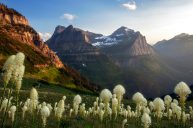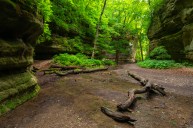The Curecanti National Recreation Area in Gunnison, Colorado, offers a breathtakingly beautiful high-desert landscape. Hills coated in sage and rabbitbrush, big blooms of Indian paintbrush, lupine, and mountain asters, impressive rock formations, and descents into the Black Canyon of the Gunnison National Park make for unforgettable Rocky Mountain adventures in this recreation area. It's a truly stunning swath of public land located in remote western Colorado.
Just like a national park, the Curecanti National Recreation Area is managed by the National Park Service (NPS). However, unlike a national park, it has no entry fees. You can just show up and start enjoying these public lands! The area is managed for prime outdoor recreation opportunities, including hiking, camping, fishing, and boating, for Coloradans and other tourists alike. I'm a local, so you can trust me when I say it's worth a visit. Here's your guide to Colorado's underrated Curecanti National Recreation Area.
Where Is the Curecanti National Recreation Area?
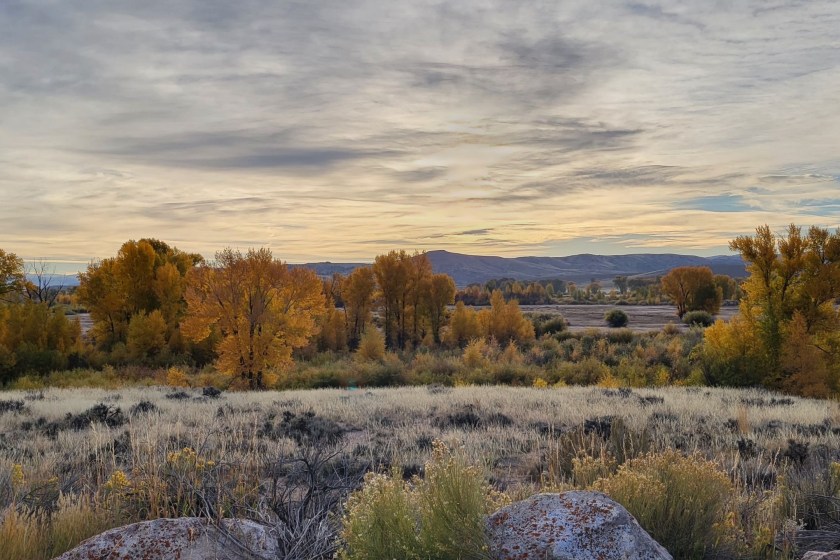
Gabriela Zaldumbide for Wide Open Spaces
The Curecanti National Recreation Area is found on Colorado's Western Slope. It lies east of Gunnison, west of Montrose, and north of scenic Lake City. Highway 50 runs right through the entirety of the recreation area, which means it's highly accessible for families, vacationers, travelers, and folks of all ability levels.
Denver is 216 miles east of this national recreation area, so if you're flying into Denver International Airport, Curecanti is about a 4½-hour drive, depending on traffic.
Curecanti National Recreation Area Activities
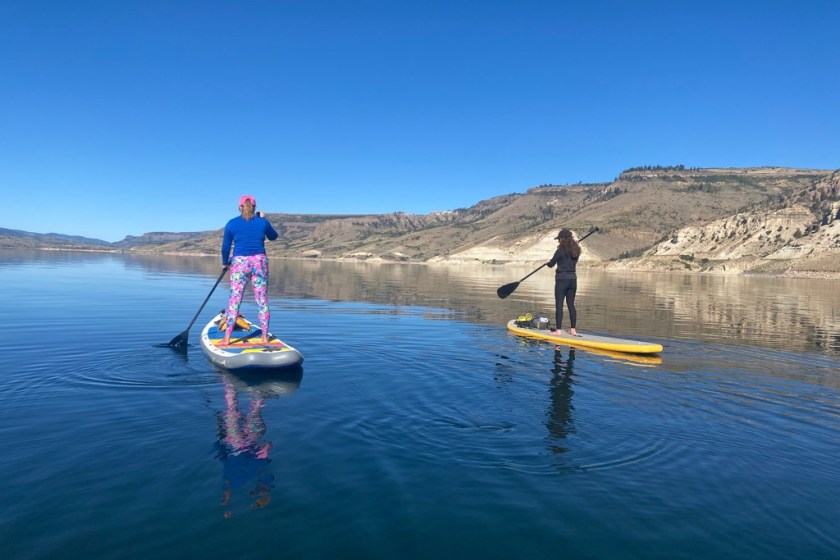
Gabriela Zaldumbide for Wide Open Spaces
The year-round outdoor opportunities in Curecanti are seemingly endless. Some of my favorite things to do in Curecanti include fly fishing the Gunnison River, hiking up to the Dillon Pinnacles, trekking to the bottom of the Black Canyon of the Gunnison via the Pine Creek Trail, hunting rabbits during hunting season, and ice fishing for trout in the wintertime.
You can find three breathtaking reservoirs in Curecanti: Blue Mesa, Morrow Point, and Crystal. Fishing is allowed in all three, but you can only take your boat out on Blue Mesa. If you want to rent a boat instead of bringing your own, check out the Elk Creek Marina for its list of boat rentals. Renting a boat lets you go salmon fishing, tubing, and trolling as well.
Here's a brief list of the outdoor activities you can enjoy in Curecanti:
- Camping
- Hiking one of the seven popular trails that meander through this rec area (more below)
- Wildlife watching for elk, mule deer, bighorn sheep, coyotes, foxes, birds, Gunnison's prairie dogs, and more
- Swimming, paddle sports, and boating
- Hunting (except shed hunting)
- Fishing, including spin, fly, and ice fishing for kokanee salmon, rainbow trout, brown trout, lake trout, yellow perch, and suckers
- Foraging
The NPS offers educational evening programs nightly between Labor Day and Memorial Day that anyone is welcome to join. Topics range from Gunnison's local wildlife, geological history, and the creation of Blue Mesa Reservoir to Indigenous cultures, water conservation, and astronomy.
Curecanti National Recreation Area Hiking Trails
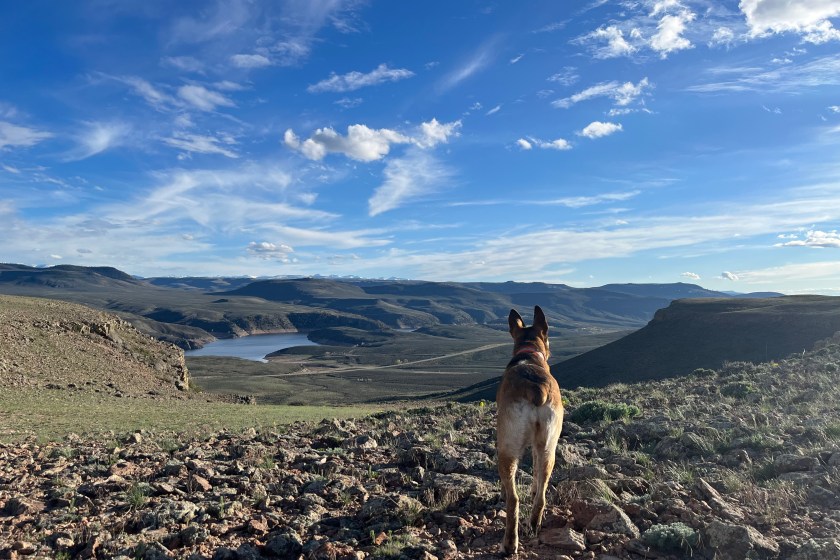
Gabriela Zaldumbide for Wide Open Spaces
The best way to get to know Curecanti's landscape up close and personal is to hike through it. Just remember to pack appropriately for a day hike, including plenty of water, snacks, and sunscreen, especially if you're hiking in the heat of summer.
Curecanti National Recreation Area features seven designated hiking trails:
The Neversink Trail meanders along the Gunnison River in a cool and shady cottonwood bottom. Look for warblers, brown trout, and mule deer along this 1.5-mile round-trip hike. It's an easy one and a mere 5 miles from Gunnison.
The sometimes-steep Dillon Pinnacles Trail takes you straight up to one of the most eye-catching geological formations in Curecanti (besides the Black Canyon, of course). It's 4 miles round-trip and of moderate difficulty.
Pine Creek Trail descends 180 feet down into the Black Canyon via a well-maintained set of steps. Once you're down the steps, the trail follows the Gunnison River in the canyon's bottom. The rainbow trout fishing here can be excellent if the flows aren't too high. Round-trip, this moderate hike is 2 miles long, but be prepared: Those steps that go down also go back up!
This trail gives you great views of the steep, sheer walls and extreme narrowness of the Black Canyon of the Gunnison. It also takes you to a footbridge that ends up on the northern edge of Crystal Reservoir. The trail is 1.5 miles long round-trip and ranges from easy to moderately strenuous.
The Curecanti Creek Trail descends from the Black Canyon's rim all the way to the Curecanti Needle, a 700-foot tall granite spire. This 4-mile round-trip hike is strenuous; be prepared to lose — and then gain — 900 feet of elevation.
This trail winds through oak, pine, juniper, and fir trees. and takes you to camp and picnic sites along Morrow Point reservoir. It's 6 miles total and very strenuous with little shade — although there is a toilet at the end of the trail.
This trail is best hiked during the spring or fall. It features breathtaking views of the San Juan mountains and ends at an overlook 1,800 feet above Crystal Reservoir. Hikers can expect to bump into mule deer, cottontails, least chipmunks, migratory and resident birds, and maybe even foxes, coyotes, black bears, or the elusive elk. This hike is 5 miles total and moderately strenuous.
Recreation Area Entry Fees and Hours
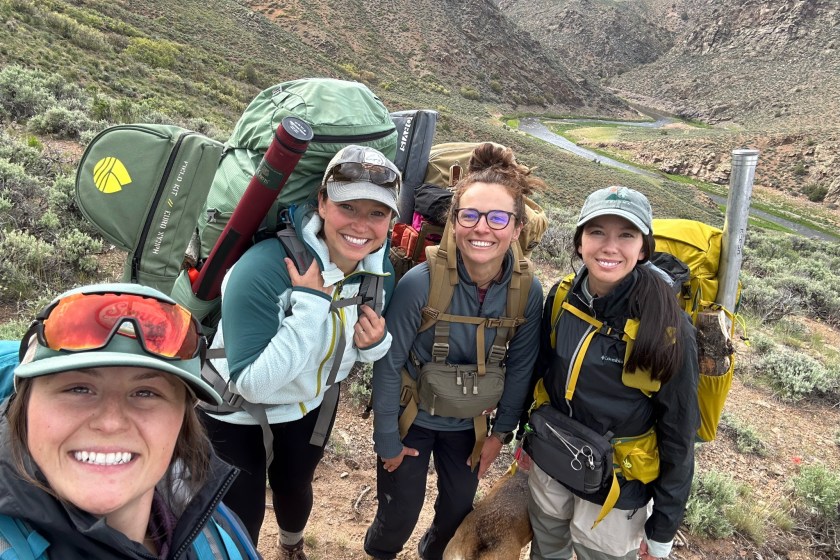
Gabriela Zaldumbide for Wide Open Spaces
There are no entry fees to access the Curecanti National Recreation Area. You can just come on in via any of the access points off Highway 50. There's no parking sticker, day pass, annual pass, or other entry fee required.
However, if you want to head up to Highway 92 or continue west on Highway 50 to access the east portal of the Black Canyon of Gunnison National Park, you will have to pay an entry fee for the national park. Private vehicle passes to access the national park are $30. An annual pass is $55.
Curecanti is open 24 hours a day, every day; the visitor center is open from 8 a.m. to 5 p.m. every day, including holidays, during the summer. Just note that the visitor center's hours vary in the wintertime.
Recreation Area Camping Reservations and Fees

Gabriela Zaldumbide for Wide Open Spaces
Curecanti features 11 campgrounds, including Cimarron Campground and Elk Creek Campground, which both have potable water, pit toilets, dump stations, and parking areas. RVs, campers, tents, and vehicles are allowed in both the designated campsites and parking areas. A few exclusive campgrounds are only accessible by boat.
Accessible camping spots are available, too. They feature clear ground space, a firm camping surface, larger parking spots, reserved parking spots, and other features. These camping spots help ensure that everyone of all ability levels can enjoy the recreation area.
The NPS recommends that you reserve a campsite prior to your visit. The only exception is Dry Gulch Campground, which is first-come, first-serve only. Campsites average $16 a night.
Just remember that there are no restaurants in the recreation area, so you'll want to stop at City Market or Safeway in Gunnison for groceries before heading out to your campsite.
The Best Times to Visit Curecanti National Recreation Area
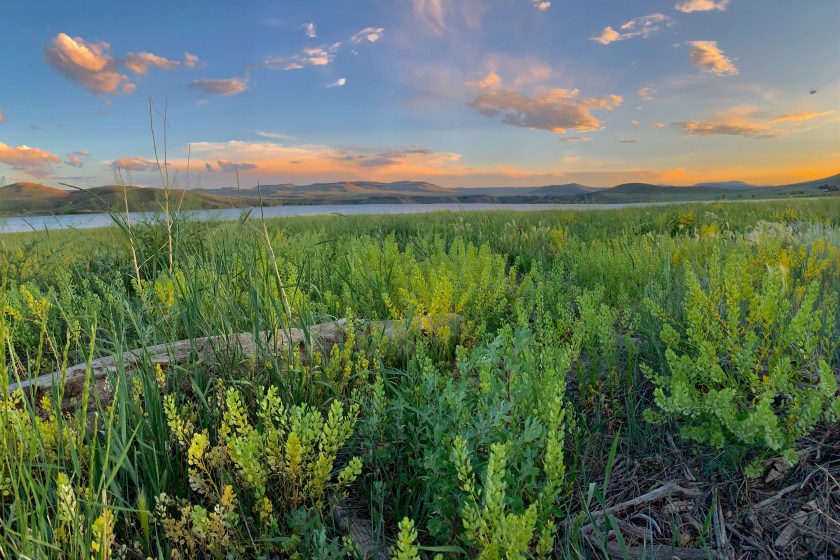
Gabriela Zaldumbide for Wide Open Spaces
Gunnison is known for its 300-plus days of sunshine per year, so this popular destination is frequented year-round by locals and tourists alike. During the summer, campsites fill up quickly, and strings of trucks, campers, and RVs can be seen scooting down Highway 50 to grab groceries and gas in Gunnison.
Most summer weekends, paddleboarders, beachgoers, boaters, and anglers hit the water all day. Just keep in mind that Blue Mesa's water levels vary greatly depending on the amount of snowpack, rainfall, and time of year.

Gabriela Zaldumbide for Wide Open Spaces
While tourism can die down in the spring and fall, come winter, Blue Mesa becomes a home for insulated ice fishing shacks. Snowmobilers can be seen crossing vast expanses of ice with sleds full of fishing gear in tow. Cross-country skiing, snowshoeing, and wildlife watching are also popular winter activities in Curecanti.
Regardless of the time of year, Curecanti is a great place to exercise your dogs, watch the sunset, or even just make a quick pit stop to use the bathroom on a cross-country trip. It is, without a doubt, a hidden gem.
Is the Curecanti National Recreation Area Dog-Friendly?
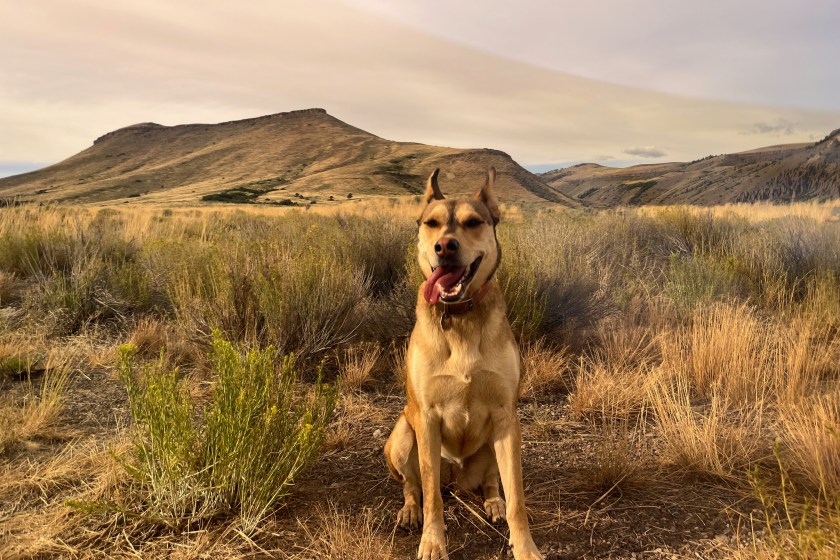
Gabriela Zaldumbide for Wide Open Spaces
Yes, dogs are allowed in the recreation area. In fact, your dog can become a BARK Ranger! Dogs are also permitted at campsites and on hiking trails but must remain on a leash. (Head's up: This rule is frequently broken, so be prepared to encounter off-leash dogs at his recreation area.)
No dogs are allowed in marinas or on docks unless they are actively being moved to and from a boat. Dog owners must dispose of their pet's poop, too!
Your Questions about Curecanti, Answered
No, Curecanti is a national recreation area. While it's still owned and managed by the National Park Service, it's not designated as a national park. This means its rules and outdoor recreation opportunities are more relaxed: Entry is free, hunting and fishing are allowed, and the area is open year-round to everyone.
Yes, the public can legally swim in Blue Mesa Reservoir. However, the National Park Service doesn't allow swimming within 100 feet of marinas, bridges, or unanchored boats. No swimming is permitted between the buoy lines and the dams either.
Beginning over 10,000 years ago, the Indigenous Ute tribe lived and thrived in the arid yet bountiful Four Corners region. A nomadic tribe, its members spent each year following elk herd migrations. In the mid-1800s, a Tabeguache Ute chief named Curecanti, who was also known as Curicata, made a name for himself as a hunter. Unfortunately, few publicly accessible records exist that discuss his life or history in Gunnison, but Chief Curicata is the namesake for the Curecanti National Recreation Area.
The Curecanti National Recreation Area was established on Feb. 6, 1965, to manage recreational opportunities in the region. This is the same year that the Blue Mesa Dam construction was completed.
The Curecanti National Recreation Area consists of 42,000 acres. It contains three reservoirs including Blue Mesa Reservoir, which is the largest body of water in Colorado. It features 96 miles of shoreline.
Yes, you may launch boats into Blue Mesa Reservoir, from any of its five boat launches and inspection sites: Iola, Lake Fork, Elk Creek, Stevens, and Ponderosa. Check the NPS site for seasonal or other closures when planning to bring your boat.
READ MORE: The Best 13ers to Hike in Colorado, All Close to Denver

